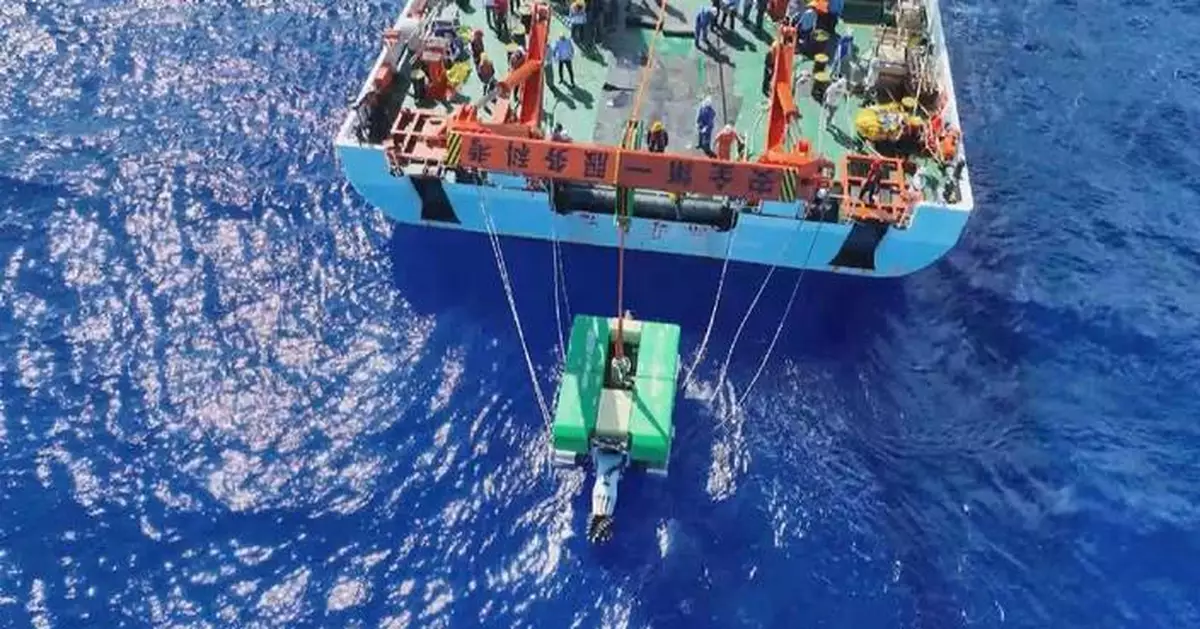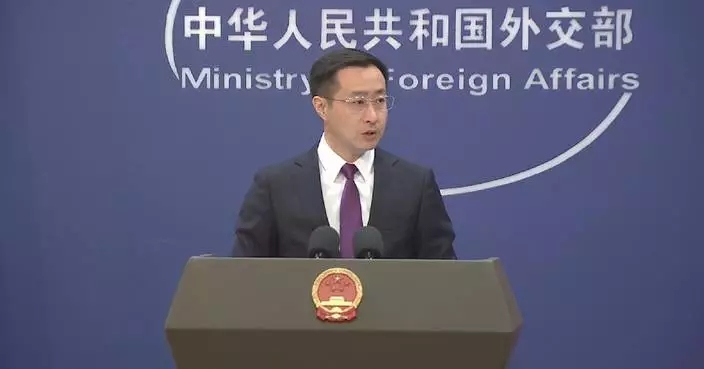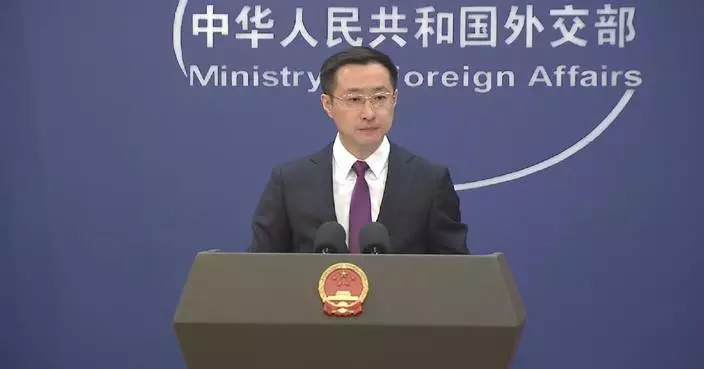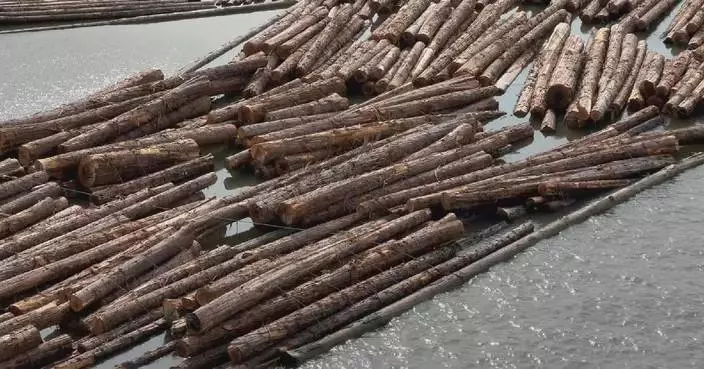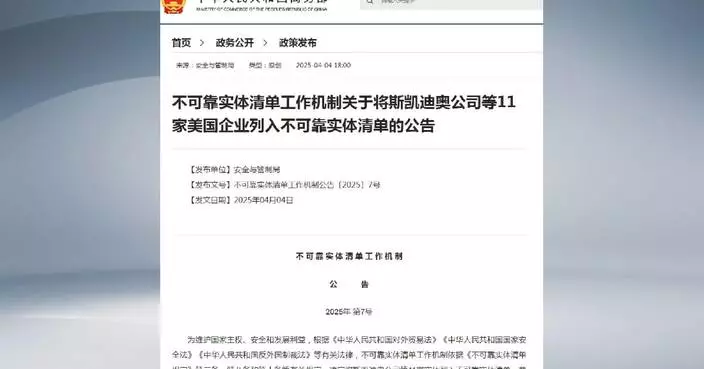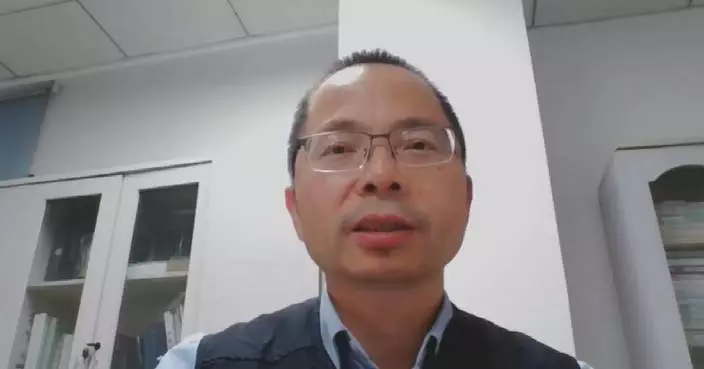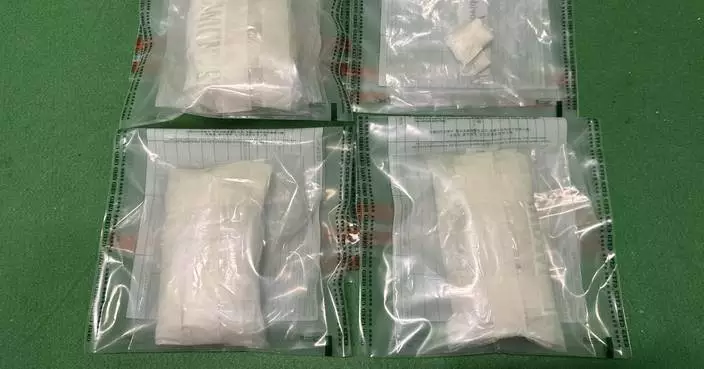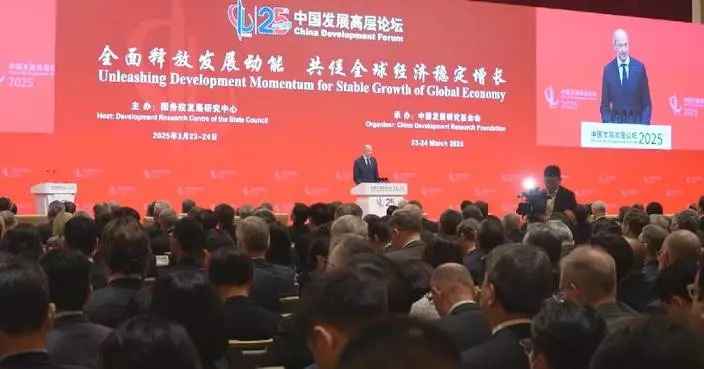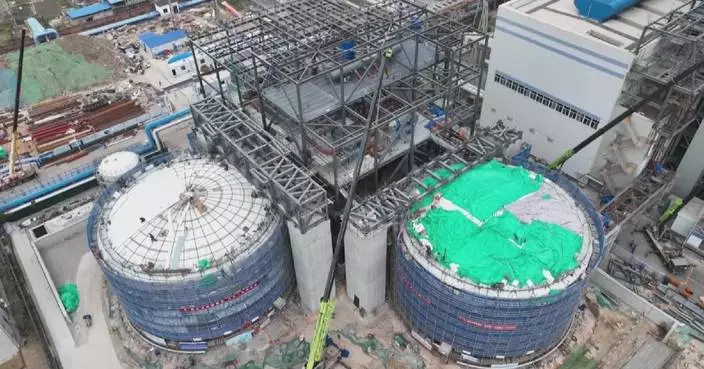China's deep-sea heavy-duty mining vehicle "Kaituo 2" has completed sea trials at depths exceeding 4,000 meters, setting new records in deep-sea mining in China, the Shanghai municipal government said Tuesday.
Deep ocean seabed is rich in mineral resources such as polymetallic nodules, cobalt-rich crusts and polymetallic sulfides, as well as important key materials for new energy, aerospace and defense industries such as copper, cobalt, nickel and manganese.
In the deep-sea trials conducted on June 23, the vehicle, independently developed by Shanghai Jiao Tong University, successfully completed five consecutive dives in the polymetallic crust and nodule area in the western Pacific Ocean, including one dive to a depth of 4,102.8 meters.
Under various complex seabed terrain conditions such as steep and rugged underwater mountains with an average slope of more than 20 degrees and a maximum slope of 36 degrees, as well as high viscosity or soft sediment on the seabed, the vehicle completed various travel experiments, including straight-line moving, large curvature rotation in place, climbing and obstacle crossing.
"Kaituo 2 has demonstrated its powerful underwater rock drilling and collection capabilities and successfully extracted about 200 kilograms of various types of deep-sea mineral samples," said Yang Jianmin, chief scientist for Kaituo 2 equipment at Shanghai Jiao Tong University.
In order to make the vehicle move more freely, the team developed a four-track travel technology to help it adapt to complex seabed terrain. Kaituo 2 is able to autonomously sense the mining environment, and the four tracks can adjust the direction and status in real time according to the actual seabed terrain, the first domestic deep sea mine to be able to do that.
Kaituo 2 is also pioneering a composite drilling and mining technology for polymetallic crusts, nodules and sulfide and the heavy-load deployment and recovery technology for deep-sea non-metallic umbilical cables, making breakthroughs in key technologies like the comprehensive perception of deep-sea environmental sound and light and the intelligent control of seabed mining operations.
It's also equipped with comprehensive environmental monitoring equipment, which monitors the deep-sea plume and underwater noises to an international standard.
"During the sea trial, deep-sea mining vehicle Kaituo 2 successfully completed multiple and continuous deep-sea deployment and recovery and seabed mining operations, under wind force six and sea condition level four. The technical performance of the equipment fully met the design indicators, showing that the vehicle has powerful and efficient mining ability and strong climbing and obstacle-crossing capabilities," said Yang.
China is a pioneer investor and contractor in the development of international seabed mining areas, with the most exclusive exploration rights and mining priorities. It owns a total of five mining areas in various seabed areas, including the Pacific Ocean and Indian Ocean, where the reserve of strategic minerals such as manganese, nickel and cobalt can meet the country's needs in the next decades.
The success of Kaituo 2's sea trials will help China to realize the sustainable utilization and development of seabed resources as soon as possible.

China's deep-sea heavy-duty mining vehicle reaches record depth in sea trials


